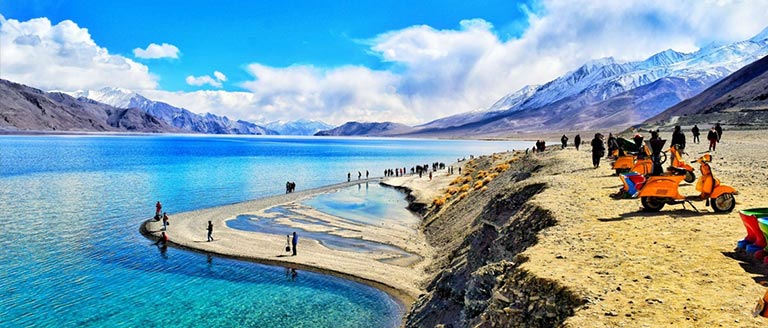
Ladakh - The Cradle of Buddhism
Ladakh, known for its jagged peaks and stark landscapes, offers travelers awe-inspiring beauty and deep cultural heritage. Beyond its rugged façade lies an ancient civilization rooted in Buddhism. Ladakh's wild terrain and spiritual charm attract those seeking both adventure and tranquility.
Leh - The Capital
Situated at 3,505 m, Leh is surrounded by the Stok and Ladakh mountain ranges. Key attractions include Leh Palace, the Victory Tower, Namgyal Tsemo Gompa with its ancient Buddha statue, and the Shanti Stupa, inaugurated by the Dalai Lama in 1985.
Kargil - The Apricot City
At 2,704 m, Kargil was once a vital trade hub. It's ideal for trekking, mountaineering, and river rafting. Nearby sites include the rock-cut Maitreya Buddha in Mulbek, Shergol’s cave monastery, and the meditation retreat Urgyan Dzong.
Nubra Valley
Once part of the ancient Silk Route, Nubra Valley enchants with its remote beauty. Key stops include Diskit, Panamik with its hot springs, and the secluded Ensa Gompa, accessed via a scenic trek.
Pangong Lake
At 4,350 m, this mesmerizing lake stretches across India and China. The route passes Thiksey Monastery and Changla Pass, with nomadic herders and war memorials en route.
Lamayuru Monastery
Located between Leh and Srinagar, Lamayuru is one of Ladakh’s oldest monasteries. It features ancient shrines, chortens, and the iconic Avalokitesvara statue.
Tso Moriri Lake
Encircled by 20,000-ft peaks, this sacred freshwater lake in Rupso is a sanctuary for migratory birds like bar-headed geese and Brahmini ducks.
Best Time to Visit
May to August is ideal, offering pleasant weather. Winters (September–February) are harsh, while spring (March–April) brings occasional snow but manageable conditions.



